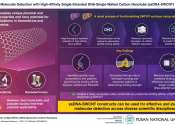Bacteria encode hidden genes outside their genome; do we?
Since the genetic code was first deciphered in the 1960s, our genes have seemed like an open book. By reading and decoding our chromosomes as linear strings of letters, like sentences in a novel, we can identify the genes ...








